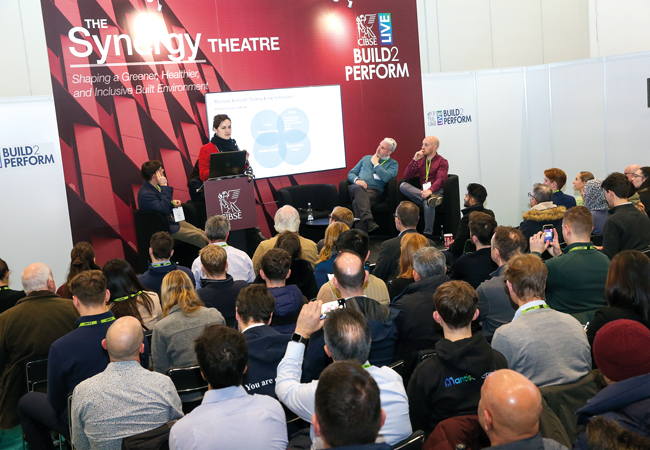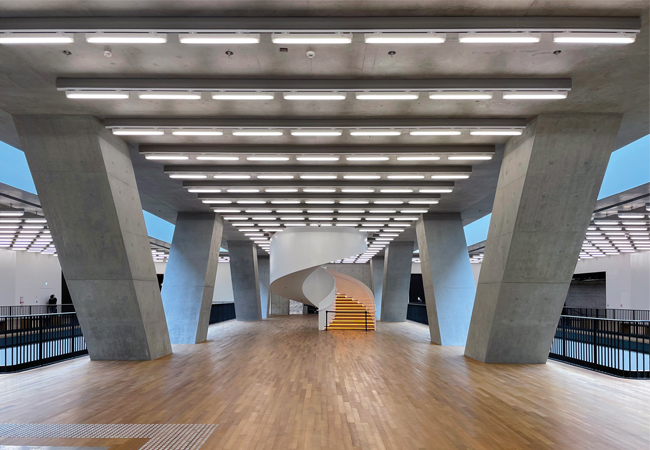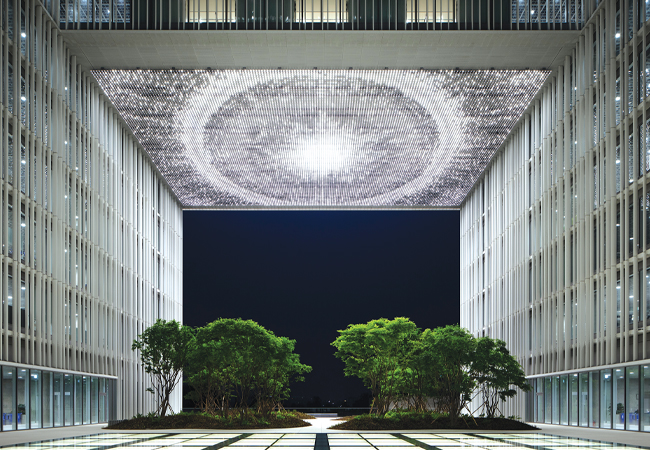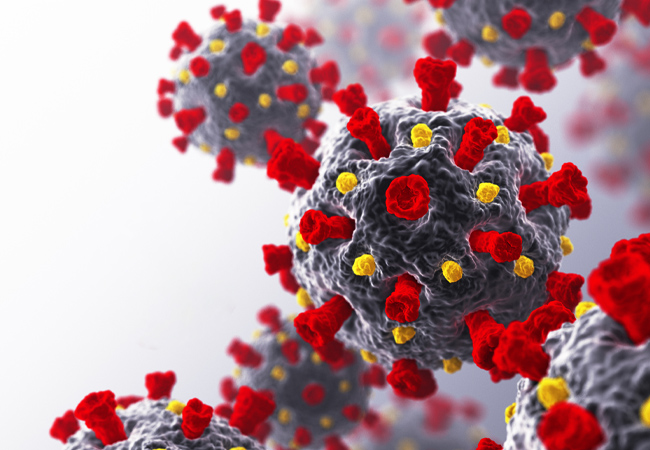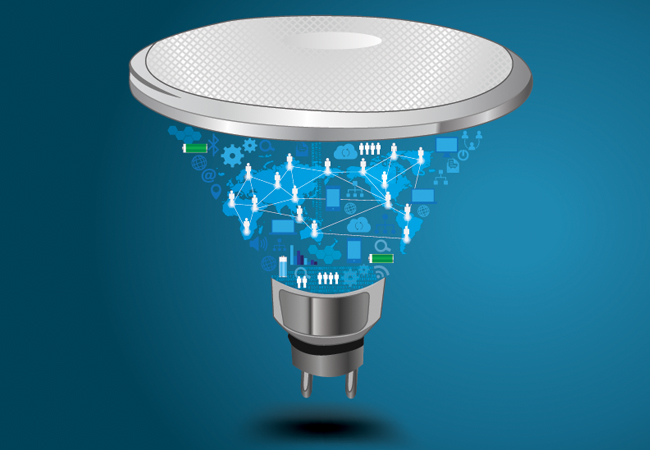
Have you ever gone to a meeting or to a site visit without your mobile phone? The chances are that you quickly returned to your office to get it, or felt frustrated and at a loss without it. When the first mobile phones came out, their main service was simply telephony. Now, a mobile phone is a personal computer that we use for a wide range of business and social functions. We all consider wireless communication and connectivity a necessity.
This means we send a lot of data through cellular networks. With an estimated seven billion mobile phones on the planet – more than the world’s population – it is estimated that every day, worldwide, we send 500 petabytes of data – that’s five with 17 zeros. This ever-increasing demand is a technical challenge for our mobile and wireless communication systems.
Technical challenges
One issue is the sheer amount of energy needed to run mobile phones. Although this is low for a single handset, the combination of billions of phones and
the running and maintenance of communication networks and base stations means that the total daily energy requirements are very high.
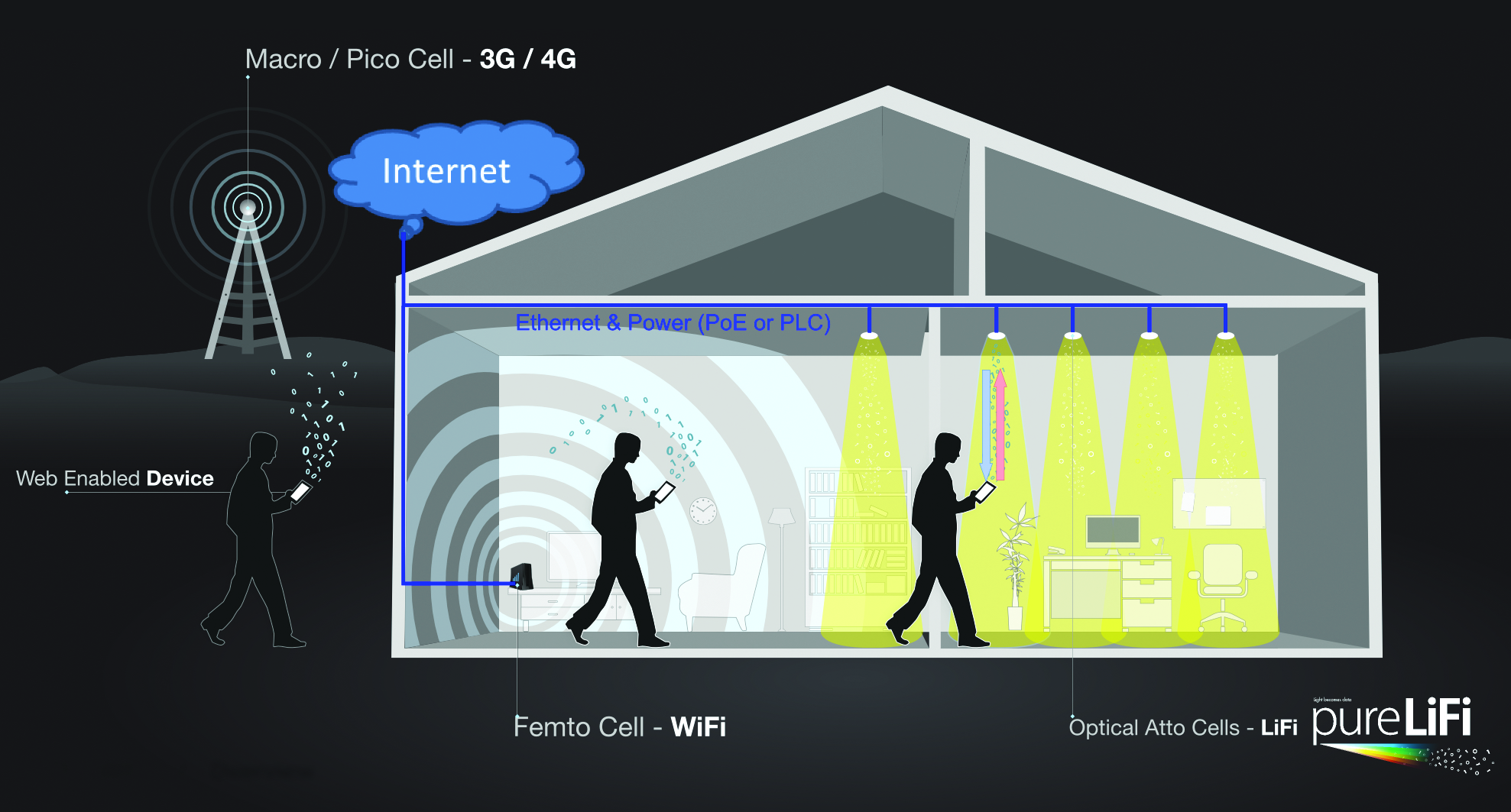
Users will soon be able to access the internet via LiFi as well as through WiFi hotspots at home and outdoors
A major challenge is the limited availability of the radio frequency (RF) spectrum – as shown in the frequency allocation chart, there are virtually no wavelengths (white spaces) available for public use. This has been termed the ‘spectrum crunch’. The RF spectrum is cluttered, scarce and expensive.
Ten years ago, I looked at the entire electromagnetic spectrum, which includes light waves, infrared, gamma rays and x-rays, as well as radio waves. I concluded that the visible light spectrum is huge (around 300THz is available: 430-770 THz), unregulated (free), secure and safe. We have developed new electronic systems – microchips and printed circuit boards (PCBs) – and turned off-the-shelf LED sources into high-speed communication devices that will form a new layer of wireless networking, otherwise known as LiFi.
LiFi technology
LiFi is a term first coined in my 2011 TED Talk, when it was demonstrated in public for the first time.
Using light waves instead of RF to deliver data, LiFi provides 10,000 times more bandwidth. It is a bi-directional, networked, mobile, high-speed data communication technology that complements WiFi, and has the key benefits of greater capacity, security and energy efficiency.
LiFi Research and Development Centre
The LiFi Research and Development Centre at the University of Edinburgh undertakes research, promotes knowledge exchange with the global LiFi community, and operates a Flexible Open Collaboration model with partners to develop LiFi products and new spin-out companies.
With LiFi technology embedded, LEDs are transmitters, and photo detectors – such as in your mobile device – are receivers. These are inexpensive, already in common use and have existing infrastructures, avoiding the need for thousands of base-station masts. If street lighting columns were fitted with LED sources, for example, they could provide the next 5G and 6G networks.
How LiFi works
LEDs are based on electroluminescence, whereby certain materials emit light when electricity is applied. LEDs are illuminated by the movement of electrons in a semiconductor material, such as aluminum-gallium-arsenide (AlGaAs) and gallium nitride (GaN). The light emits from the p-n junction of the diode.
LiFi modulates the changes in the intensity of light to communicate data – mathematical algorithms are used to enable encoding of ‘0s’ and ‘1s’ into subtle changes of the intensity of light of an LED. This is done at very high speeds of more than 100 million times a second. At the receiver, algorithms convert the signal into the same binary data stream.
In the Optima Lab at the LiFi Research and Development Centre, transmission speeds of 3.5Gbit/sec at 2m distance, and real-time video streaming at 1.1Gbit/sec at 10m distance, have been demonstrated. This is almost twice as fast as current WiFi systems.
Optical attocell networks – the next step
With a LiFi chip integrated, an LED luminaire in a ceiling becomes a LiFi access point, and all LiFi access points together form an optical attocell network. The optical access points are programmed for multi-user access and signal handover, giving connectivity similar to a 5G base station. In heterogeneous networks, this would enhance the area data rate (the number of bits per second per square metre) by three orders of magnitude compared to what is currently available with RF systems only.
About the author
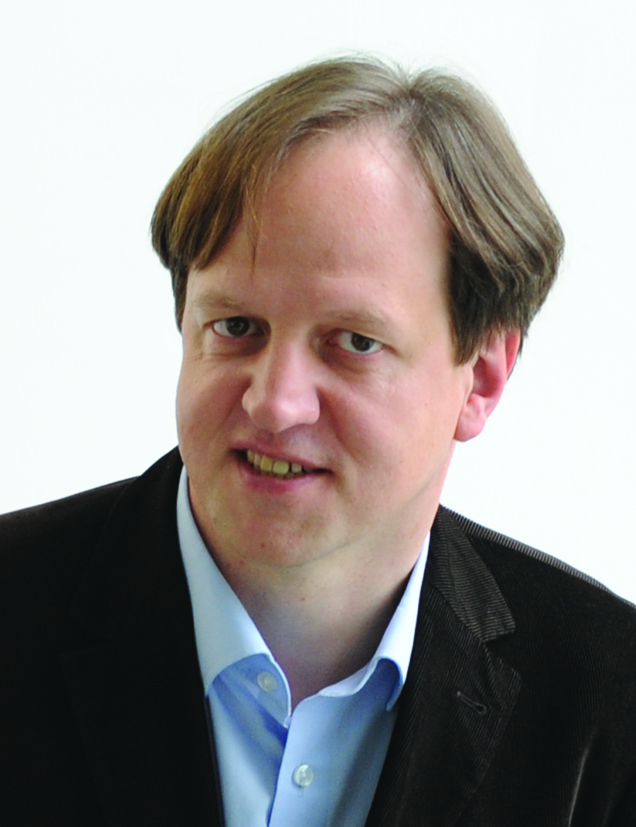
We are currently developing new systems to manage dynamic handover and resource sharing in hybrid LiFi/WiFi networks. This will overcome the problem experienced in airports, shopping centres or museums when you cannot get a signal. In the future, for example, geo-location systems in buildings could use hybrid networks.
Light as a service
Light sources today serve one purpose: lighting. In the next five years, LED sources will become smart-sensing and high-speed communication devices. They will be an integral part of emerging smart buildings and the Internet of Things (IoT), where Light as a Service (LaaS) will be a dominating theme. LiFi will be ‘pulled’ into the lighting industry by new business models. In the future, luminaires will be replaced because of the new functions and not because they are worn out – rather like smartphone upgrades today.
Applications
LiFi is particularly appropriate for environments where WiFi is unsuitable or where it does not provide enough capacity to meet increasing demands. Examples of these initial markets include:
- Places where secure data exchange is of paramount importance, such as in hospitals, company headquarters, and homeland security agencies
- Modern factories where the operation of tools and machines requires constant and reliable connection to central computer servers (an example of IoT in operational buildings)
- Intrinsically safe environments such as refineries, oil platforms or petrol stations where electromagnetic radiation from the antennae of RF communication systems could spark explosions.
The connected solar panel
In my TEDGlobal 2015 talk, we showed that off-the-shelf, 30cm x 30cm solar cells can be used to receive data speeds of up to 15 Mbps. This new technology means that solar panels on buildings can be adapted to be used for mobile wireless communication, thereby greatly improving the energy sustainability of buildings. This will also give the many millions of people and rural communities throughout the world – who don’t have infrastructures for electric power or for the internet – to have sustainable access to information for the first time.
Paris showcase for first fully industrialised LiFi luminaire
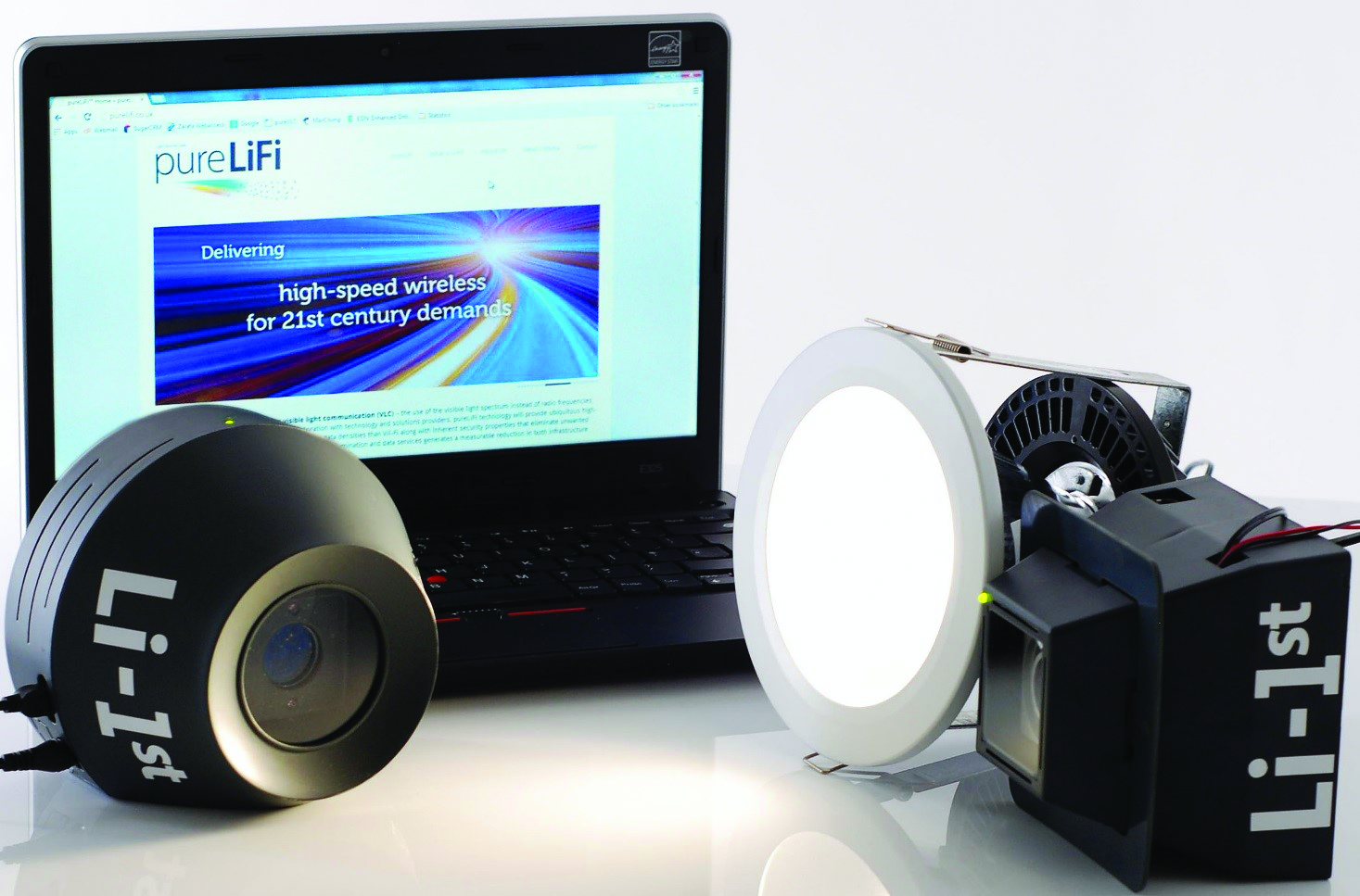
It designs, develops and delivers LiFi solutions for original equipment manufacturer (OEM) companies, and has international partnerships with organisations such as Cisco, Rolls-Royce and Independence Blue Cross.
It has now linked up with French LED lighting company Lucibel to produce the first fully industrialised LiFi luminaire. This off-the-shelf product integrates the pureLiFi access point into a single Lucibel luminaire, cutting installation costs for lighting and communications. The first installation will be at the Paris headquarters of property developer Sogeprom, a subsidiary of Societe General.
Li-1st is the first commercially available, high-speed, bi-directional LiFi system, offering 5Mbps download and upload speeds. Rather than being a mass-market product, its aim is to create future partnerships
First demonstrated at the Mobile World Congress in Barcelona, in 2015, Li-Flame is the first fully networked LiFi system, capable of transmitting to multiple users at the same time, and is in the process of being miniaturised.
Emerging industry
LiFi could have a huge impact on our everyday lives, and independent market research has forecast that it will be a $6bn industry by 2018. The lighting sector is redefining itself as a result of LEDs, which have a 20 times longer lifespan than incandescent lamps. Old business models are ceasing to exist, creating a huge opportunity for LiFi.
View Harald Haas’s original 2011 Ted Talk here



